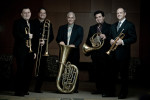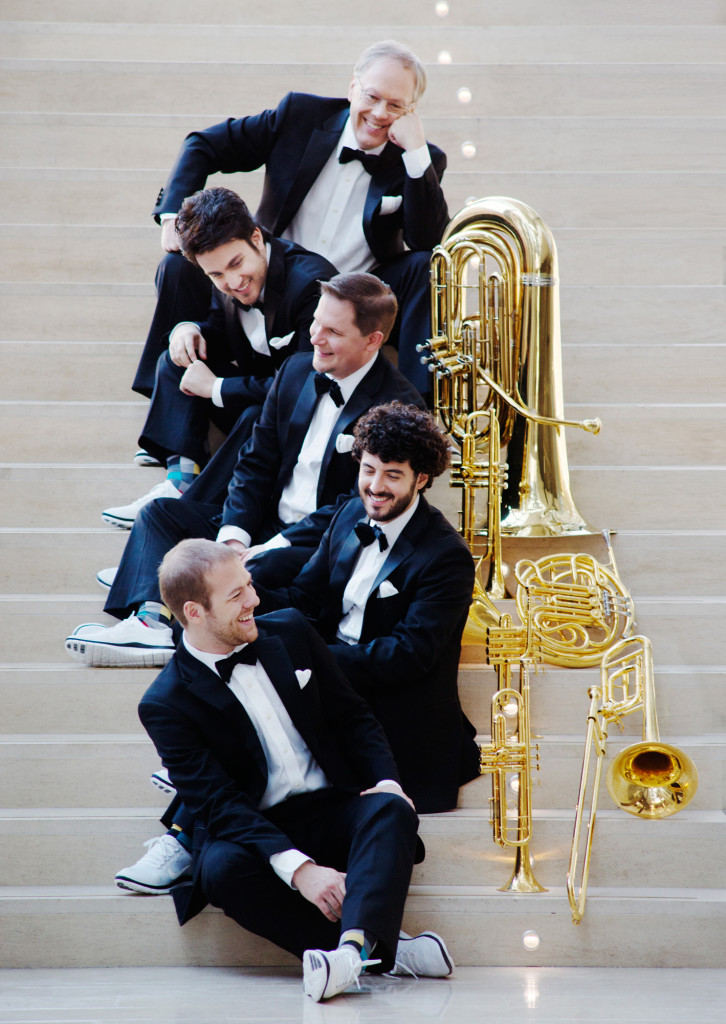Since their founding in 1970, The Canadian Brass have been the greatest ambassadors for brass and one of the premiere chamber music groups in the world. Their refreshing approach to the brass quintet was that of virtuoso soloists. This, along with the Canadian Brass trademark showmanship and enjoyment of their craft have been hallmarks of the groups live performances, and have been imitated by legions of musicians, chamber music and otherwise. A “masterpiece approach” espousing the greatest literature available has been a guiding principal of the legendary ensemble, along with outstanding recordings, and the constant development of new concert literature in the form of both arrangements and compositions for brass quintet. FIVE! tm, is undeniably excited to present the Canadian Brass.
Chuck Daellenbach, Tuba 
As a tubist, what do you owe to Harvey Phillips and the New York Brass Quintet and Arnold Jacobs and the Chicago Symphony Brass Quintet? How would you trace the origins of the modern brass quintet?
The Chicago Brass Quintet set the tone and structure for brass quintets, having started in 1947. Their recording from the early 50’s was a remarkable model for young brass players — the Beethoven String Quartet movement is still unparalleled, exhibiting exceptional tuba playing. With Arnold Jacobs setting the base and “Bud†Herseth on top, they were instrumental in establishing the format, sound and direction for brass quintets. They spent a lot of time playing for, and workshopping young people in the 50’s, which certainly helped ground the brass quintet as an important part of the classical music industry. Since they were all orchestral musicians first (notably: except Renold Schilke, whose first love was the brass quintet), the ensemble did not become a full-time professional organization. The New York Brass Quintet was next, starting in about 1954.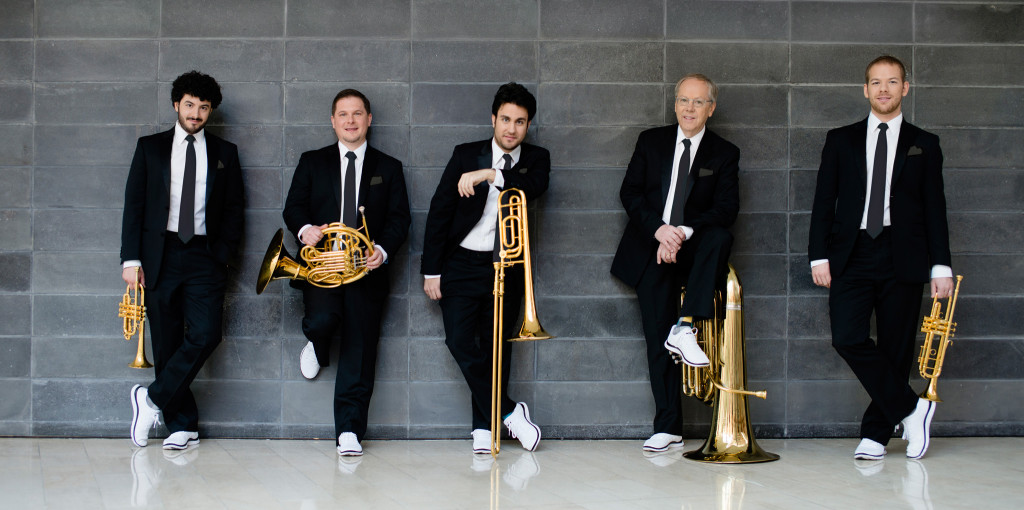 They were primarily freelance musicians in New York City making it possible for them to tour more extensively during the concert season. Their contribution was building the quintet repertoire and making the quintet known as a serious entry, particularly at colleges and universities. These are definitely the two quintets that handed down the seeds of development for Canadian Brass. The Canadian Brass was the first ensemble to become a full-time brass quintet. In order to do so, the repertoire needed expansion and the concert presentations needed to take the audience along for the musical journey the musicians has set. By taking a masterpiece approach, only the finest music from our “western music†culture was selected, Bach, Handel, Vivaldi, etc., along with listener-friendly new music.
They were primarily freelance musicians in New York City making it possible for them to tour more extensively during the concert season. Their contribution was building the quintet repertoire and making the quintet known as a serious entry, particularly at colleges and universities. These are definitely the two quintets that handed down the seeds of development for Canadian Brass. The Canadian Brass was the first ensemble to become a full-time brass quintet. In order to do so, the repertoire needed expansion and the concert presentations needed to take the audience along for the musical journey the musicians has set. By taking a masterpiece approach, only the finest music from our “western music†culture was selected, Bach, Handel, Vivaldi, etc., along with listener-friendly new music.
What new directions do you see it taking?
We are in a wonderful period of transition, much like the movies went through with “talkies.†Electronic music fills the airwaves, pop music totally dominates the press, halls are filled with dance music, rock-and-roll audiences are pushing classical artists out of the concert halls. So now the brass quintet, which has an audience enlivened for forty years by Canadian Brass, needs to bring that audience into this new era. Electronic distribution of music has been very helpful in getting this started, with a group’s music being available worldwide at any given moment. No longer does a fan need to wait until the group shows up in Japan or Munich, or Toronto for that fact. The repertoire needs to continue to develop so that an enduring body of music demands performance.
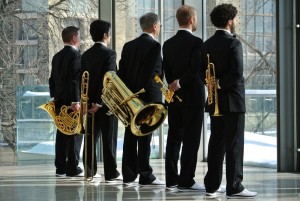 Can you imagine how it would have affected the tuba if there had been no outlet in the brass quintet? Tubas need ensembles! The tuba a bass instrument. Sure, there are a few soloists, Roger Bobo having been the exceptional best of them, but the opportunities are so limited, much like string bass for example. But, as the anchor for any conceivable grouping of instruments and/or voices, the possibilities are limitless! The proof of this is how often one sees the tuba player being the contractor, business brain, organizer of musical events.
Can you imagine how it would have affected the tuba if there had been no outlet in the brass quintet? Tubas need ensembles! The tuba a bass instrument. Sure, there are a few soloists, Roger Bobo having been the exceptional best of them, but the opportunities are so limited, much like string bass for example. But, as the anchor for any conceivable grouping of instruments and/or voices, the possibilities are limitless! The proof of this is how often one sees the tuba player being the contractor, business brain, organizer of musical events.
Achilles Liarmakopoulos, Trombone
 You have studied trombone in both Europe and North America. Which are the best parts of each tradition that you try to incorporate in your playing?
You have studied trombone in both Europe and North America. Which are the best parts of each tradition that you try to incorporate in your playing?
Nowadays, both styles of playing are more similar than they used to be. I think that the North America style is focusing more on sound when European playing is focusing more on style.
Both styles are beautiful though, and both have influenced me equally.
How would you contrast your approach to articulation when performing in a section of slide trombones, to playing in a brass quintet where each other instrument is valved?
I don’t think about this; in every situation I try to play as precisely and beautifully as I can.
Why is a solo career such a high priority for you?
Solo career is not my priority. Working with the Canadian Brass is my priority. But, I always love doing other things on the side like playing with different type of music groups, solo recitals etc.
Chris Coletti, Trumpet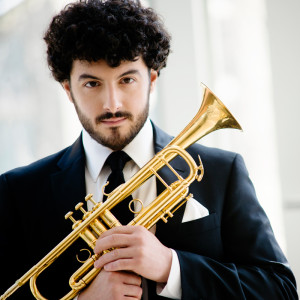
How does singing influence your trumpet playing and teaching?
Singing is everything! Brass instruments have so many similarities to the human voice. It may be obvious, but when you hear a voice or a brass instrument, you are hearing the vibrations of that person’s actually body—for a singer it’s the vocal chords and for a brass player it’s the lips—but its essentially the same mechanics at work producing the sound. I constantly remind students that the sound we produce on our instruments is merely a reflection of the sound in our imagination. Of course, it can take years to develop an external sound that even closely resembles our inner sound which, too, is always evolving. For both brass players and singers alike, the connection between our imagined sound and our external sound is a strong one as our external sound is our body. Additionally, brass players must be able to hear a note in his/her head before playing it—just like a singer. There isn’t a teacher in the world that can tell someone how to play a C on trumpet if that person can’t hear it themselves. In my opinion, the way most instrumentalists are taught an instrument now a days (including me) is a little backwards. Instead of learning by ear as we as humans do best (i.e. how children learn to speak), we are handed sheet music just as we are handed an instrument for the first time; it’s like learning how to read and how to walk at the same time. We systematically sidestep our innate ability to learn by ear until our playing and reading skills dwarf our ability to play be ear (the way we were intended!). As a result, most classical players can barely play anything by ear, even as professionals. To me this is strange! I enjoy watching my student’s gain confidence as they get more in touch with their strongest gift—their ears 🙂
Is there a New York Trumpet style? If so, how would you describe it?
That’s a tough question, partly because the answer is “yes and no”. NY is unique in that it has SO MANY types of live music going on at a really high level; 2 trumpeters going to the same school studying with the same teacher may have very different interests and influences. At Juilliard, I had colleagues that were into styles ranging from jazz to Renaissance cornett to contemporary composition to free improv (me), yet we all had the same teacher, played in the same orchestras and quintets, and all loved classical music. Of course, NY has really fantastic orchestras with particularly stellar trumpet/brass sections. My teachers made a big impact on me and a lot of NY players (Mark Gould and David Krauss of the MET Orchestra and Phil Smith of the NY Philharmonic). The MET and The PHIL are very influential orchestras with two totally different but, paradoxically, uniquely New York trumpet sounds. I also had the pleasure of studying with Laurie Frink before she passed away—she was famous for being an incredible player AND teacher. She performed with (and taught) some, if not most, of the best players around! If anything, the “New York Trumpet Style” can be identified not by generalities, but an eccentric amalgam of sounds interpreted uniquely by each individual.
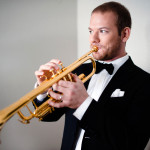 Caleb Hudson, Trumpet
Caleb Hudson, Trumpet
What is it like to tour with the Canadian Brass?
I’m fortunate to inherit the legacy of the legendary Canadian Brass, to be a member of an ensemble of virtuosic players who travel the world, meeting old and new fans across the globe, and I am extremely proud to be a part of the ongoing growth of the group. It’s my honor and responsibility to contribute my part to its creative and musical integrity. There is no such thing as a finished product, but the constant journey towards a higher standard is paramount. When I see young kids filled with inspiration in the same way I was, it reminds me of our purpose as musicians.
Bernhard Scully, Horn
How would you compare playing in a chamber music orchestra with strings to a quintet with brass.
Playing in a chamber orchestra is quite different than playing in a brass quintet. In a chamber Orchestra, you never play above a forte. The repertoire of the chamber Orchestra goes all the way back to the baroque times until the modern times. In the chamber orchestra there are a few opportunists to be a soloist, but not many. Most of the playing is in the background and happens in the softer dynamic. There is, on the other hand a huge wealth of smaller chamber music that includes horn as well, like wind quintet, wind serenades, etc. There is a vast array of styles of music to master in the chamber orchestra and we are lucky as horn players to get prominent parts in music all the way from Bach up to the most modern composers.
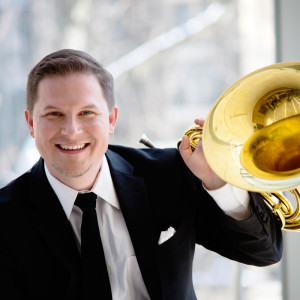 In the Canadian Brass, you are on stage as a soloist for the entire time! We play music in the jazz idiom often as well as all other styles. The dynamics are louder than the chamber orchestra. We move around, dance, interact with the audience, and assume the role of performers to a much higher degree than in the relatively reserved and conservative concert manner of the chamber orchestra.
In the Canadian Brass, you are on stage as a soloist for the entire time! We play music in the jazz idiom often as well as all other styles. The dynamics are louder than the chamber orchestra. We move around, dance, interact with the audience, and assume the role of performers to a much higher degree than in the relatively reserved and conservative concert manner of the chamber orchestra.
Do you approach certain things differently?
In the chamber orchestra, everything is taken very literally in terms of performance, plus there is usually a conductor which changes the dynamic completely. There is much less flexibility on stage because of the greater number of people in the orchestra as opposed to the give members of the quintet.
If so, how?
The rehearsals in the quintet are much more open and relaxed than the highly structured nature of the chamber orchestra. In the orchestra you must take your cue from the management on when to show up for rehearsals and concerts, when to leave, and what to play. The conductor gives instructions as to how to play the music. There is little if any negotiation on any of these matters.
In the quintet, we decide when we rehearse, what we play, how we play, and with whom we collaborate! It is more work in this regard but in many ways much preferable to not having as much freedom. Also, when we do perform with ensembles, we are the soloists! It is a VERY different thing to be the soloist as opposed to playing in the band;-)
The Road: Favorite thing?
I love the camaraderie of my colleagues for one! We have so much fun on the road! I love traveling in general and all it entails. I love all the wonderful people we meet.
Least favorite thing?
It’s challenging at times trying to balance my busy schedule as a university professor, father and husband, and international touring artist…but so far it’s working OK! I really have no complaints and feel so fortunate to do what I love for a living.

c. 2014 David William Brubeck All Rights Reserved. davidbrubeck.com
Images courtesy of THE CANADIAN BRASS
Interested in more “FIVE” tm interviews?
Canadian Brass 2014, Windsync 2014, Boston Brass 2015, Mnozil Brass 2015, Spanish Brass 2014, Dallas Brass 2014, Seraph 2014, Atlantic Brass Quintet 2015, Mirari Brass 2015, Axiom Brass 2015, Scott Hartmann of the Empire Brass 2015, Jeffrey Curnow of the Empire Brass 2015, Ron Barron and Ken Amis of the Empire Brass, Meridian Arts Ensemble 2015, Berlin Philharmonic Woodwind Quintet 2015, American Brass Quintet 2015

